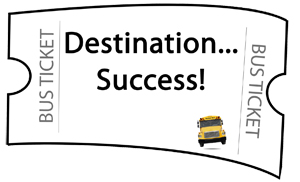I’m sure you’ve had the experience of sitting and listening to a new vision or strategy from the CEO. Sometimes these are a hit, and you can’t wait to jump on the bus, but in some cases you can tell the impact of these changes on employees hasn’t been well considered.
Businesses need to be agile in order to remain relevant in today’s market. But this doesn’t mean overlooking the needs of employees during times of change. Without a strong roadmap to follow not only will any change initiatives struggle, but your organization may even lose out on revenue!
A study by McKinsey looked at projects across 40 organizations with one of the key variables being an Organizational Change Management (OCM) Program against a project’s ROI. This study revealed:
- 143% ROI when an excellent OCM program was part of the initiative
- Only 35% ROI when there was a poor OCM program or no program
Therefore, while you may not be involved directly in generating revenue, your role in managing the human impact of change can result in a better ROI – so make sure your management team doesn’t overlook this!
Why bother with Organizational Change Management?
Organizations have to change, but managing how this change impacts employees is critical in determining the overall success of these initiatives. Key things to consider are how the plan will impact the people required to deliver the changes, and how will they be expected to deliver?
Over years of experience, we’ve seen some truly innovative ideas become unfortunate episodes in an organization because they lacked a roadmap to follow. It’s your job to ensure that a great change management plan becomes embedded in an organization, and that everyone feels comfortable jumping on board with the plan.
In our experience, the best visions and strategies can easily fail because the roadmap to success is not well defined. If you want employees in your organization to buy a bus ticket, you better make sure they’re convinced the bus is heading the right way!

What does good look like?
In most cases, organizational change strategies come from the top-down. While there is nothing innately wrong with this, in our experience, the single largest determinant of their success is organization-wide buy-in.
Remember, there is a human impact for every change initiative which, if successfully managed, can lead to a great result for the organization.
Typically, it’s the people having to execute against these strategies which will make or break the program. In order for them to purchase a ticket, they’ll need a very clear sense of:
- Where are we going?
- Who is driving the bus?
- Why has that destination been chosen?
- What is the road they need to follow?
- When are we leaving? (When does the change begin and what is expected of me?)
- The quality of the vehicle they will use?
- How much personal effort will they need to invest?
- Are we there yet? (Have we established the markers and signposts to let us know we are making progress?)
So before your CEO decides to plan a companywide excursion, make sure everyone in the organization that will be taking a ride knows exactly what is expected of them and where they’ll end up!
Damian Menzies is the owner and CEO of Choice Career Services. He is committed to ‘helping organizations manage the human impact of change’. This commitment has been developed over a 25-year career in business. Damian’s focus is building strong client relationships to assist them in managing the change issues occurring within their organizations.

No responses yet